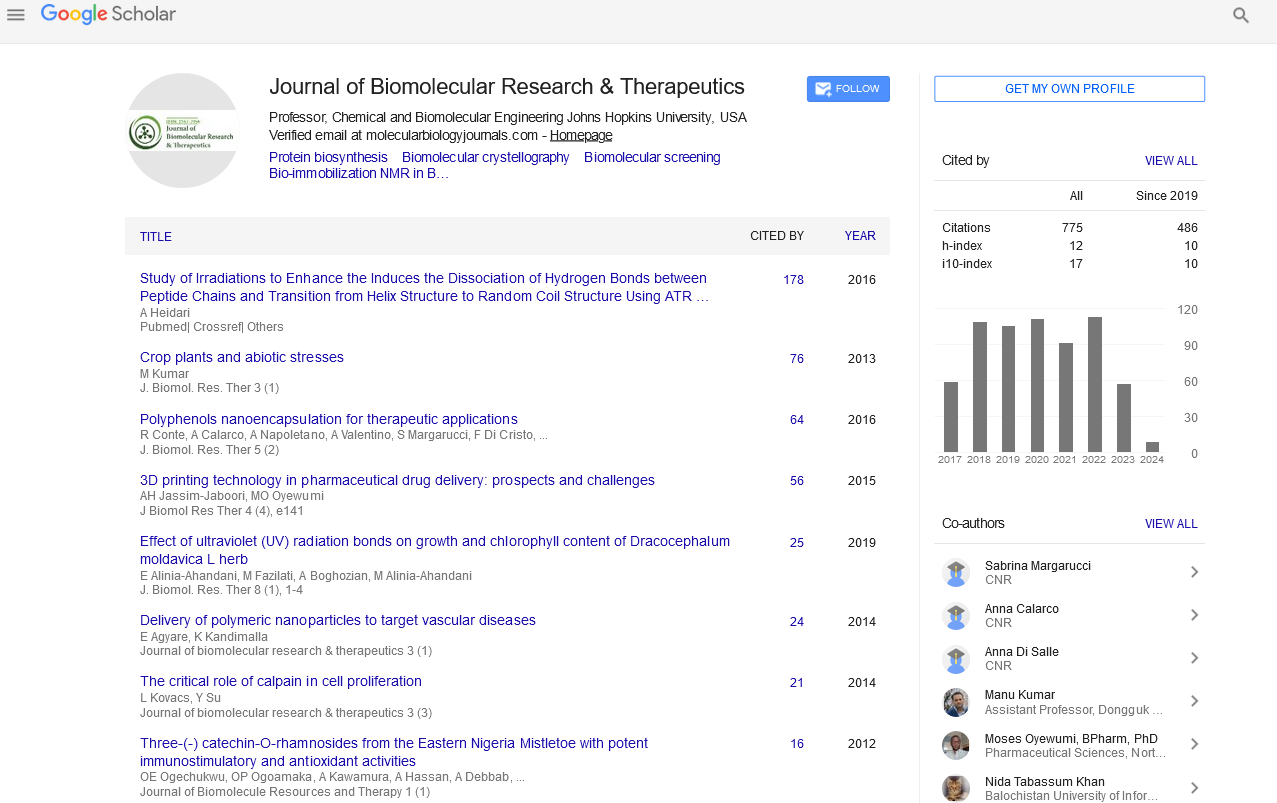PMC/PubMed Indexed Articles
Indexed In
- Open J Gate
- Genamics JournalSeek
- ResearchBible
- Electronic Journals Library
- RefSeek
- Hamdard University
- EBSCO A-Z
- OCLC- WorldCat
- SWB online catalog
- Virtual Library of Biology (vifabio)
- Publons
- Euro Pub
- Google Scholar
Useful Links
Share This Page
Journal Flyer

Open Access Journals
- Agri and Aquaculture
- Biochemistry
- Bioinformatics & Systems Biology
- Business & Management
- Chemistry
- Clinical Sciences
- Engineering
- Food & Nutrition
- General Science
- Genetics & Molecular Biology
- Immunology & Microbiology
- Medical Sciences
- Neuroscience & Psychology
- Nursing & Health Care
- Pharmaceutical Sciences
Abstract
Sirolimus and Hydroxychloroquine as an Add-On to Standard Therapy for Glioblastoma Multiforme: Case Report
Mau-Shin Chi, Hui-Ling Ko, Cheng-Yen Lee, Kai-Lin Yang, Ming-Da Tsai, Kuang-Wen Liao, Ho-Chi Hsu and Kwan-Hwa Chi
Background: Combined surgery, adjuvant radiotherapy (RT) and temozolomide (TMZ) remain the standard treatment for glioblastoma multiforme (GBM). However, the outcome is grave and novel therapeutic targets are actively researched in translational studies. Double modulation of autophagy by simultaneous administration of the inducer, sirolimus, and the inhibitor, hydroxychloroquine (HCQ) has been applied in clinics and reported to be synergistic as an “autophagy paradox”. We describe the first add-on of sirolimus-HCQ to GBM treatment.
Patients and methods: We retrospectively enrolled 20 GBM patients who received surgery followed by nonpalliative TMZ and RT therapy in our institute between January 2007 and April 2014. Of these, 3 patients were treated daily with adjunctive HCQ (400 mg) and sirolimus (2 mg) in addition to the standard TMZ-RT treatment.
Results: The median survival time of the 20 patients was 13.7 months (range: 2.2 to 37 months). Surprisingly, the 3 patients who received sirolimus and HCQ as an add-on treatment survived for a longer period of time (median 34 months). Transient grade 3 myelotoxicity and grade 2 fatigues were rapidly resolved by treatment interruption or dose reduction.
Conclusion: “Autophagy paradox” might be advantageous in combination with standard TMZ-RT treatment for newly diagnosed GBM patients.


